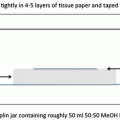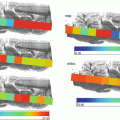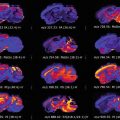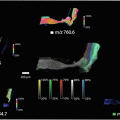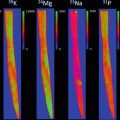© Springer Science+Business Media LLC 2017
Laura M. Cole (ed.)Imaging Mass Spectrometry Methods in Molecular Biology161810.1007/978-1-4939-7051-3_11. “A Future Amalgamation Between the Scientist and the Clinician?”
(1)
Biomolecular Sciences Research Centre, Sheffield Hallam University, City Campus, Howard Street, Sheffield, S1 1WB, UK
Abstract
Personalized medicine is gaining momentum and analytical methods such as MS are ideally situated to provide coherent imaging of human disease. The cancer research field is already starting to benefit from the MS imaging applications; non-cancerous diseases will hopefully enjoy the same success. Often, the way forward is to embrace several techniques, which can complement and verify each other. This approach can be seen as less confrontational as everyone can play a part in the development of a new working practice. Stakeholders, professional bodies, and instrument manufacturers will be open to maximizing the patient benefit; investment is more likely given the past performance and reputation of the collaborative highly skilled team.
With this in mind, how close are we to a future amalgamation between the scientist and the clinician? Can we accelerate the integration of innovative bench technologies into the clinical setting and bring state-of-the-art imaging diagnostics to the patient bedside or General Practitioners treatment room?
Key words
CollaborationTranslational medicineClinical settingMass spectrometry1 Introduction
The key factor that drives almost all research is to inform and improve current practice in the clinical setting. Researchers in the field of mass spectrometry (MS) are not an exception. In other words, research aims to have direct patient benefit within a reasonable timescale. While this can be described as idealistic, on some level, researchers strive hard to achieve this as they increase their expanding repertoire of published journal articles. Specific measurable outcomes of research, such as the presentation of data and ideas at conferences, peer-reviewed journal articles, and the invitation to editorial and scientific advisory roles for example are a daily aspect of our scientific careers.
Translating biomedical science into practical applications can be a slow process, given the need for robust and stringent controls that exist. Current funding and governance models tend to be short-term and nationally focused; at times more support is needed to help design and sharing high-impact resources [1]. Generally, this process can be speeded up in some circumstances, for example in the light of planning for an influenza pandemic [2] or indeed the much-needed resources employed in the recent outbreak of Ebola in West Africa [3]. The speed of this response is mostly attributed to resources, money, and widespread support and above all arguably timely communication between distinctive professionals in their fields. Therein lies a common human trait, the ability to establish and maintain collaborative professional relationships. Such networks exist as a working platform to facilitate the constant review of clinical practice, to improve facilities, and to ensure original contributions that may result in direct clinical benefits.
Everyone who considers themselves to be scientifically trained will have some level of expertise of their field in addition to hard-earned experience with a specific technique. Not only do you need to define your research goals, but you must have a method to achieve your objectives. Expertise in the methodology is paramount, often the importance is overlooked in the initial planning stages—as if you are scientifically trained then surely you have the capability of carry out this procedure? It may require a period of optimizing, but the correct person to actually carry put these experiments needs both the expertise and the tenacity to see the project through to the end. Clinical collaborators may be new to MS as a technique and may need to be convinced in the initial stages—taken together it is easy to understand the hard work that goes into such ventures even before the instrument is switched on. The bottom line is that a vibrant and strong working link is at the heart of translational research and this is only possible by the clinical collaborations established.
2 Establishing Collaborations
Personality types that tend to favor openness and receptivity may naturally fall into conversations at meetings, such discussions lead to professional links. Upon acceptance of publication, the author often receives many invitations themselves to review papers and attend conferences as well. Again, new contacts are made. Often, it is a common theme or research agenda that facilitates collaborations. It is this relationship between the clinician and the researcher that is vital, if the two individuals share a common drive to inform practice that is the first initial step. The main hurdles then become resources, in terms of time and money. MS instrument manufacturers also have a key role in providing the technology that is affordable, robust and that meets all the regulations from overseeing clinical bodies.
We all have the same amount of time in any given working week, and is it an unfortunate working practice that most new collaborations need some time to become established, this time is often competing with the existing workloads. MS as a technology can be unappealing to the newcomer due to the amount of training and sophistication that comes along with a different approach. The researcher then can draw on their technical expertise. In any case, most professionals on either side will willingly admit that this means working outside their comfort zone and maybe their working day, of course these demands and pressures fluctuate over a given period.
Stay updated, free articles. Join our Telegram channel

Full access? Get Clinical Tree


